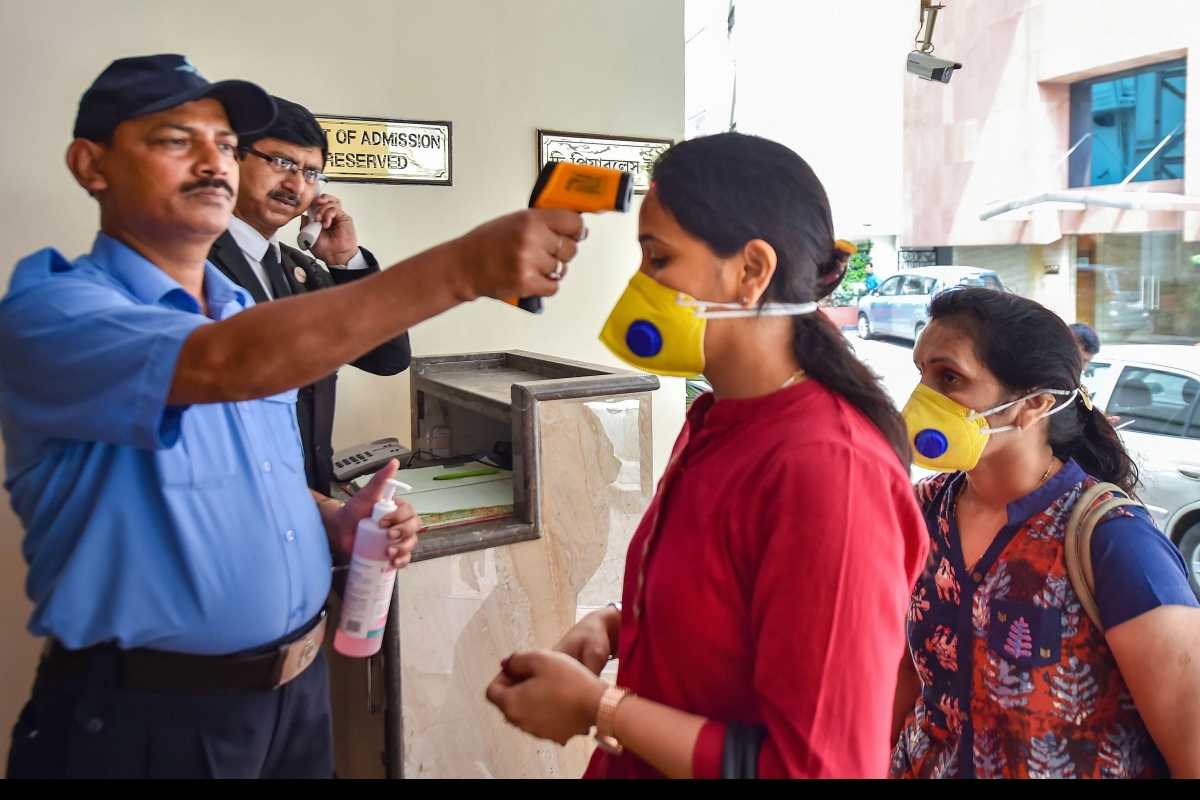To know how a thermal scanner works or how it is useful, we have to first understand at the base level how our eyes work and why we can’t see thermal wavelengths.
Why can’t our eyes see thermal wavelengths?
Our eyes capture just a very little part of the electromagnetic spectrum. What’s beyond our purview are intense and short as well as slow and long wavelengths. Thermal energy emits a longer wavelength when compared to visible light. The length of this wavelength is so high that it becomes impossible for human eyes to see it.
But just because these wavelengths can’t be detected by our eyes doesn’t mean that it is useless. Other animals can detect them and use them for locating predators and hunting food. Thermal scanning is also useful in various human areas. But before we begin discussing its applications, we have to know what it is:
What is thermal imaging?
It is based on the concept that everything and anything which has a temperature of more than absolute zero does emit some sort of heat that can be measured and detected. Thermal imaging or scanning is done using infrared cameras that expand on the human eye’s visible spectrum. These cameras can see and then capture these lights in a way that can be perceived by the human eye.
Such cameras are called FLIR or Forward Looking Infrared. They are very commonly found in military aircraft, police helicopters, and such. These tools help spot the heat sources and then display them using the video output. The infrared cameras are quite different from standard infrared cameras and night-vision devices. This is because they show only a certain type of infrared range. But various kinds of cameras capture different wavelengths for thermal scanning.
Applications of thermal scanning
- Automotive: The automobile sector is one where there’s an insane amount of competition. Manufacturers are always chasing after fuel saving and better performance giving automobiles which are also lighter in weight. But improvement comes at a cost. This cost could increase to unbearable proportions without having the benefit of thermal scanning. Thermal scanning ensures that there’s a non-destructive and non-invasive way of testing and improving. This technology ensures that quality checks can be done on motor assemblies, window heating systems, electrical systems, and such.
- Aerial: This dates back to the infamous Korean war to detect resources and enemy forces. Infrared cameras come with better geometrical resolution. This ensures that even a little detail can be seen from a great height. Along with this, the technology helps in accumulating data about environmental damages but without risking any human lives. It also helps in monitoring changes in huge geologic properties as well as integrating visual images with GPS systems.
- Electrical: Electrical systems are hazardous for humans to handle and monitor. Using thermal imaging cameras can keep humans safe from having to come into direct contact with the circuits and systems. Testing, detecting, and monitoring can all be conducted without any kind of interruption to the power flow as well. Some common problems which can be detected using thermal imaging are overheated bushings, loose connections, and poor contacts.
- Material Testing: Infrared cameras offer a safe and yet powerful alternative when it comes to studying the testing materials and structural situations. These cameras also ensure that all this is done in a non-destructive way too. After all, everything emits infrared when the temperature is well above absolute zero. As such thermal imaging ensures that there’s non-destructive and non-invasive testing since the cameras can capture readings and measurements from just the cooled or heated surfaces. Some examples of its use are building inspections, improvements in building structures, and assessing energy efficiency.
- Chemical: Many companies tend to deal with non-hazardous and hazardous chemical materials. Without thermal scanning, they won’t be able to exactly figure out heat flow as a result of these processes. Thermal imaging ensures that temperature distribution can be measured with better accuracy. Apart from this, thermal imaging makes it possible to analyze the chemical reactions that are taking place throughout the process. But the best advantage of thermal imaging is that people don’t get harmed during these processes as the camera does it all.
There are many more applications of thermal scanning. But in all of them, one thing is positive- this technology gives more accurate results and keeps humans safe from having to interact with hazardous substances.
Infrared Thermometers:
infrared thermometers are electronic devices that may be used for a myriad of responsibilities, from checking the correct temperature of your espresso to that of a jogging engine. With their multipurpose nature, the possibilities of what they can be used for are countless. But, as there presently many brands and fashions current available on the market, this often leaves capacity customers burdened as to which one is the pleasant unit for his or her needs. Non-contact thermometers are also excellent at ensuring the public is protected at diverse occasions and might be the brand new everyday within the administrative center.

